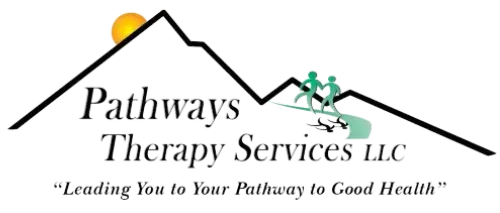FAQ
Next Course: September 10th, 8am-5pm
Click On A Question To View The Answer
What Do I Need To Send To Pathways Therapy Services Before The Initial Visit?
You will be given access to our web-based secure client portal to complete our intake process. Our clients love the simplicity and can complete all their forms without rushing to get them done before their appointments.
What Are The Direct Access Laws?
In the state of Florida, you have 30 days with no referral
What Do I Need To Wear Or Bring With Me?
You should dress in comfortable, loose clothing that allows you to move easily and doesn’t restrict circulation. Depending on your condition, your physical therapist may also recommend special shoes or a brace. You should also bring any paperwork related to your medical history, including x-rays, ultrasounds, and doctor’s notes.
What Should I Expect For The First Visit?
A comprehensive therapy evaluation will be conducted to assess your abilities, limitations, and needs during the first visit. The evaluation is the first step in developing a customized treatment plan focused on your specific circumstances. The therapist will begin by talking with you about your medical history, current health status, past treatment history, medications, and any specific concerns or goals you have. The therapist will also take measurements and perform specialized assessments/testing related to your specific condition. Based on all the information gathered, the therapist and you collaboratively set goals for therapy. You will be advised of the frequency of visits, supplies needed, and a transition path to maintenance after therapy.
How Long Will My Occupational Therapy Sessions Last?
Sessions typically last 30-60 minutes depending on your condition and the types of techniques used. Your occupational therapist will give you an estimate when you first arrive for your appointment.
Are There Any Exercises I Can Do At Home Between Appointments To Help Improve My Condition?
Yes! Your occupational therapist may provide specific exercise recommendations for you to try in between visits, which will help speed up your recovery and progress faster toward reaching your goals. It’s important to follow these carefully and always check with your OT before starting a new exercise program if you have any questions or concerns.
What If I Have Questions After My Occupational Therapy Session?
Your occupational therapist should be available to answer any questions or concerns you may have about your treatment plan before and after each visit. You can also contact the clinic directly for further assistance. We want you to get the most out of every session!
Does My Health Insurance Cover Your Services?
Pathways Therapy Services is a Medicare Part B provider. If you are receiving Home Health through Medicare Part A, our service will not be covered at the same time. If you are receiving Hospice Care, medical insurance will not cover us at the same time for the same diagnosis. We also accept private insurance but will need to run your specific coverage to see if you qualify.
How Often Will I Need To Attend Occupational Therapy Sessions?
The frequency of visits will depend on your individual goals and condition, but typically it is recommended that patients attend 2-3 times per week for a minimum of 4-6 weeks in order to maximize results. Your therapist will provide more details during your initial appointment.
What Supplies Might I Need For Lymphedema Therapy?
Supplies needed for lymphedema therapy are usually not covered by medical insurance. Supplies include but are not limited to short-stretch compression bandages, stockinette, gauze, compression garments, wound care supplies, and adaptive equipment for donning garments.
How Long Will It Take For Me To See Results?
Every person’s situation is unique; therefore the amount of time needed to reach goals varies. With commitment and dedication from both you and your occupational therapist, you can expect to start seeing results within a few weeks. The more positive lifestyle changes you make, the faster your progress will be!
How Would I Know That Lymphedema Therapy Is For Me?
If you have unexplained swelling, swelling after cancer treatment, swelling after an injury, swelling after surgery, unhealed wounds, swelling since childhood, swelling even after prolonged elevation, or use of water pills (diuretics); then a consultation would be beneficial.
Will My Occupational Therapist Be Able To Answer Any Questions I Have About My Condition?
Yes! Your occupational therapist should be available to discuss any concerns or questions you have regarding your condition or treatment plan. Don’t hesitate to bring up any issues that may arise during the course of therapy.
What If I Feel Too Much Pain During A Session?
If at any time during your occupational therapy session, you experience increased pain, it’s important to let your therapist know so they can adjust the intensity or technique as necessary. Your therapist will work with you to make sure that treatment is comfortable and effective for you
How Will I Know When I No Longer Need Occupational Therapy?
Your occupational therapist should be able to provide guidance on when it is appropriate to stop attending occupational therapy sessions based on your progress, goals, and overall health status. It’s important to listen to your therapist and continue with treatment until they feel you are ready to move on.
How Would Vestibular Rehab Help Me?
If you have dizziness or vertigo that impacts your life or frequent falls because of imbalance, then vestibular rehab will help to reduce and possibly eliminate all your signs and symptoms. The goal of VRT is to retrain the brain to recognize and process signals from the vestibular system in coordination with vision and proprioception. This often involves desensitizing the balance system to movements that provoke symptoms. Depending on the diagnosis, the therapist may also involve a specialized form of VRT called a canalith repositioning procedure, often referred to as the Epley maneuver.
Why Would I Need Occupational Therapy?
Occupational therapy works with people of all ages who need specialized assistance to lead independent, productive, and satisfying lives due to physical, developmental, social, or emotional problems. Occupational therapists use the “occupations” of self-care, work, and play/leisure activities to increase independence, enhance development, and/or prevent disability. To achieve these goals occupational therapists may also adapt to the task or the environment.
What Is Manual Lymphatic Drainage?
This hands-on technique is a light touch to stimulate the superficial lymphatics of the body. A slow stretch to the skin is all that is needed to stimulate and reroute lymphatic fluid within the body. The natural drainage of the lymphatics is from lymph vessels to lymph nodes to the heart.
How Can Manual Lymphatic Drainage Help After Post Op Surgery?
Manual Lymphatic Drainage (MLD) helps to increase lymph load and filters lymph fluid which removes cellular debris, removes excessive proteins in the interstitium which can cause fibrosis (hardening of the skin), and removes excess fluid from the surgery site which delays healing. MLD is a gentle stretch of the skin to stimulate lymph fluid to move out of the body through its natural path. MLD is a soothing massage that promotes relaxation and has an analgesic effect.
Will Someone Drain Fluid Out Of My Body?
Licensed massage, occupational, physical, and speech therapists in the state of Florida CANNOT legally drain fluid from your body through incisional or other openings. Incisional drainage should never be performed outside of a surgical/hospital setting due to the risk of infections.


